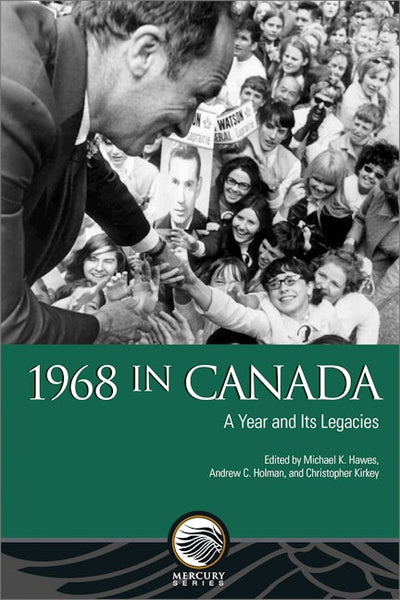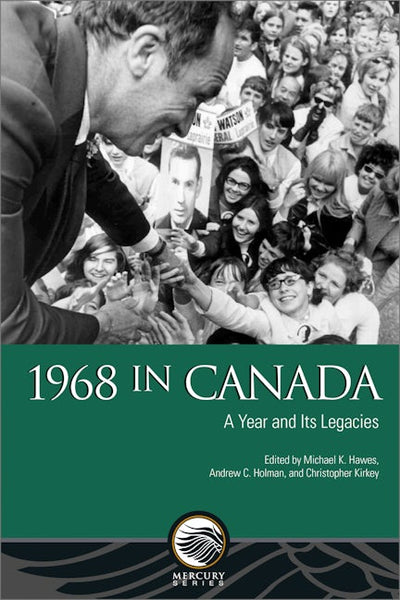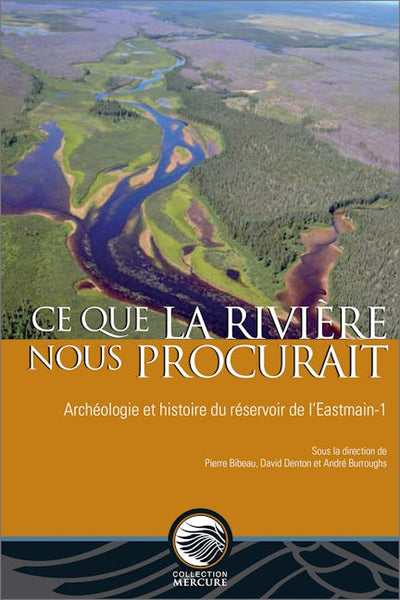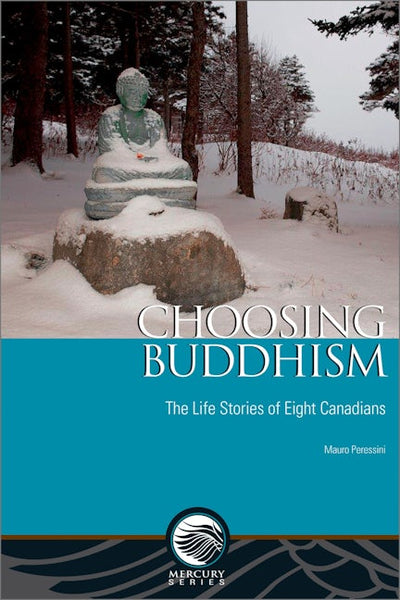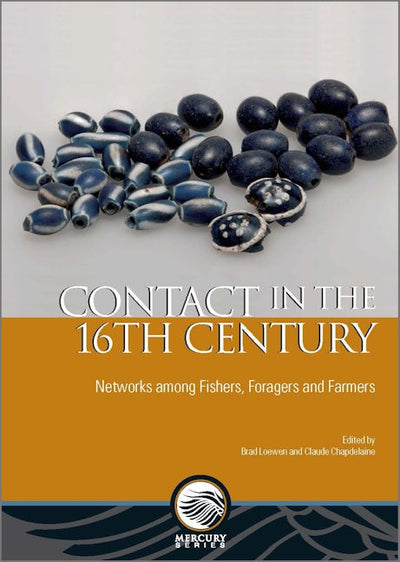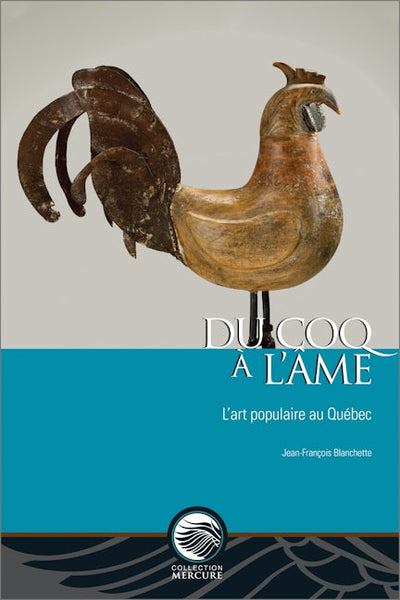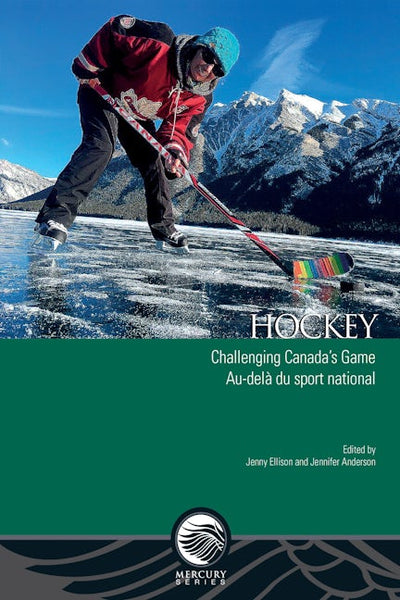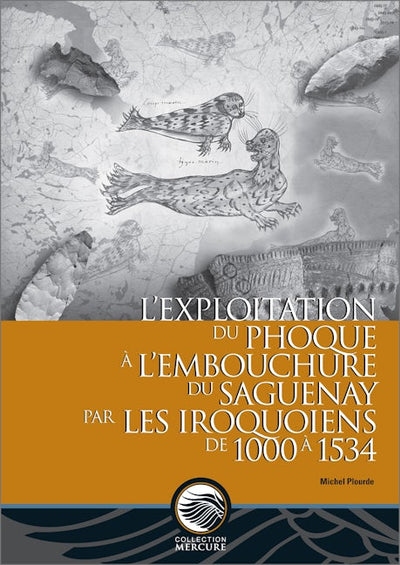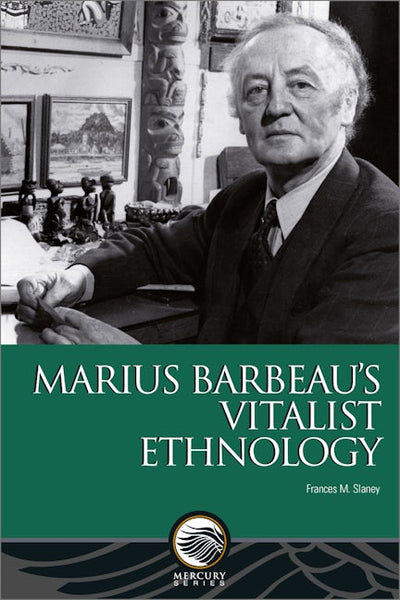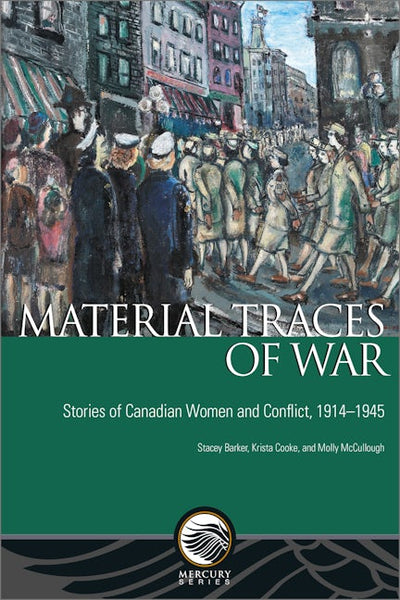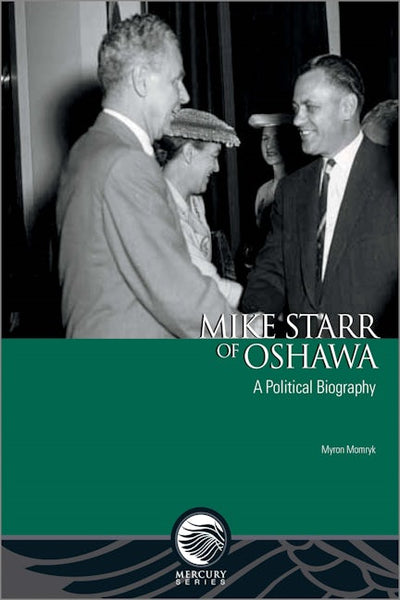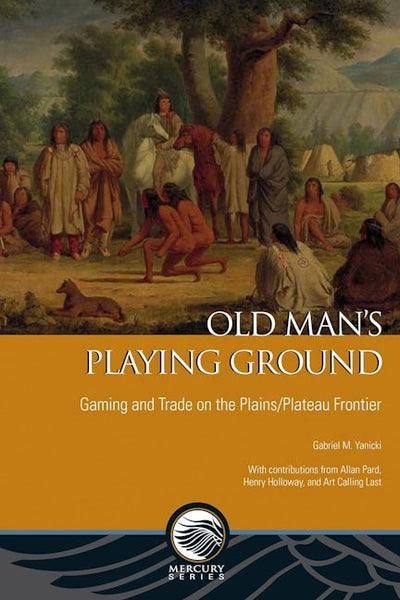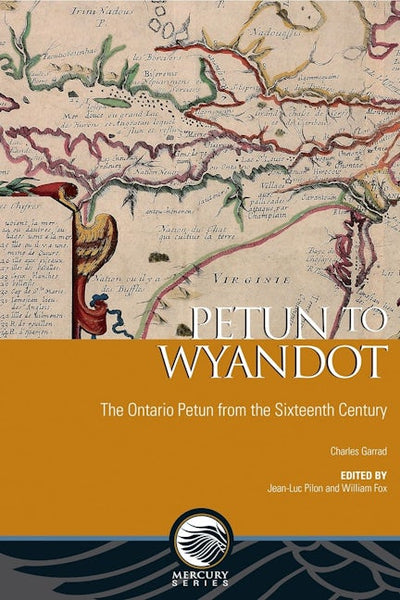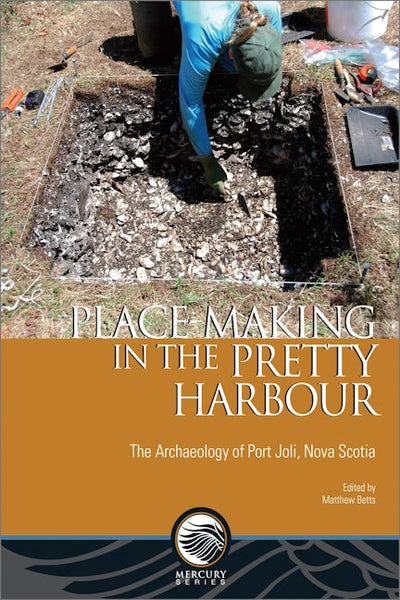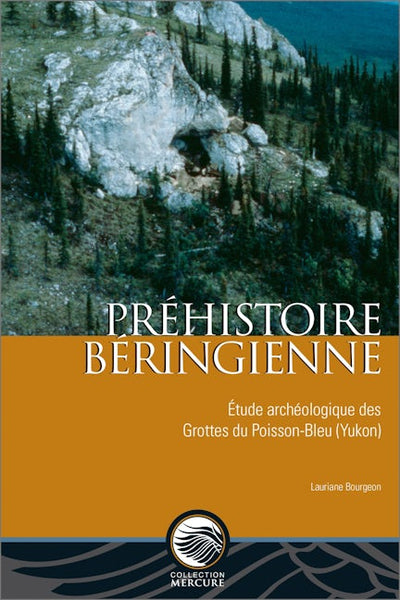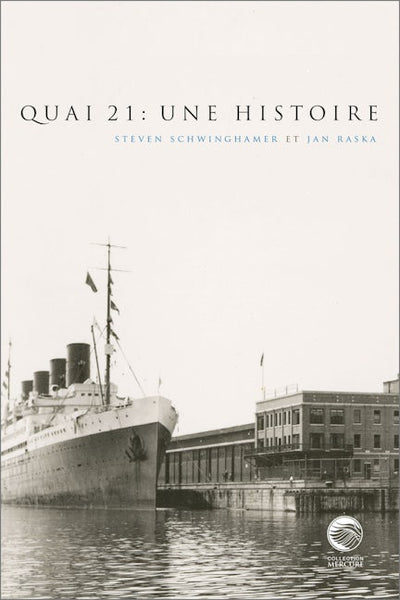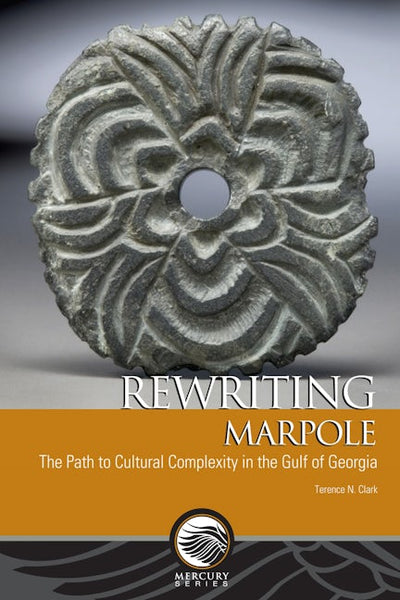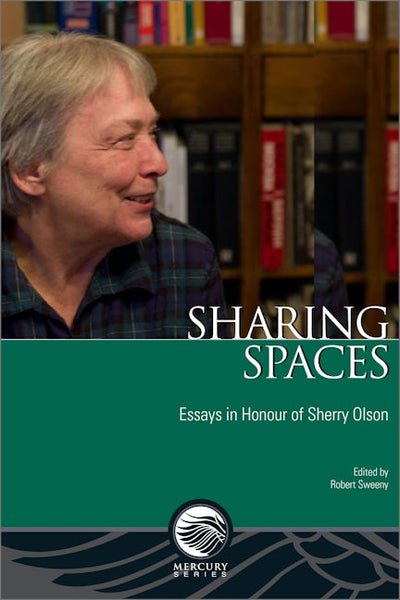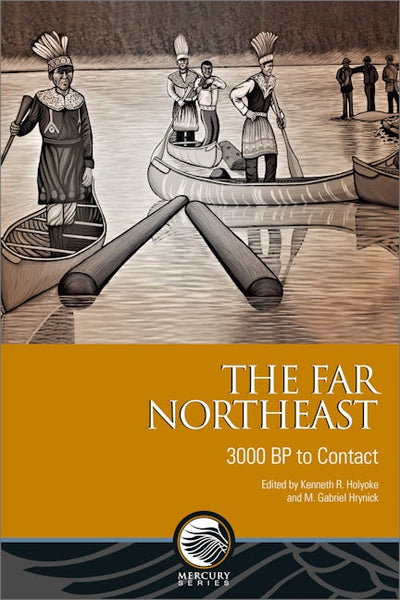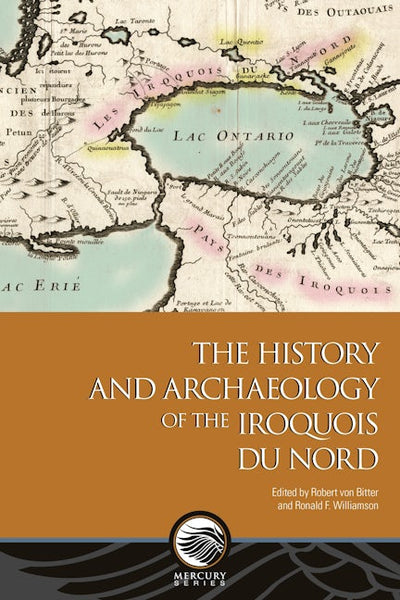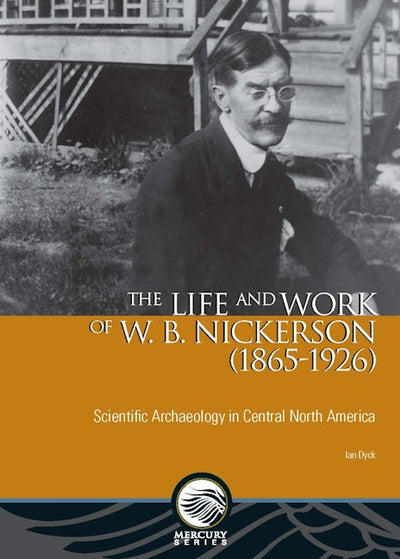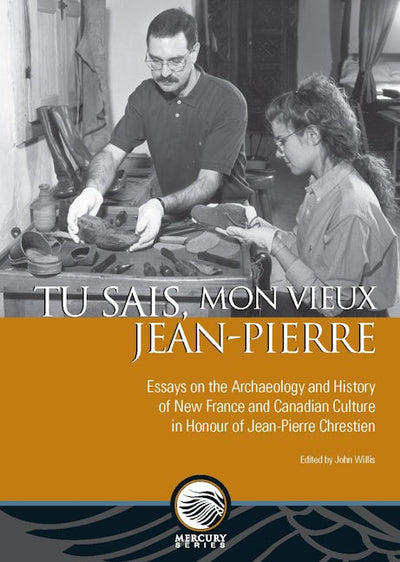-
Antiques & Collectibles
-
Architecture
-
Bibles
-
Biography & Autobiography
-
Body, Mind & Spirit
-
Comics & Graphic Novels
-
Crafts & Hobbies
-
Design
-
All collections
-
Foreign Language Study
-
Games & Activities
-
Gardening
-
House & Home
-
Humor
-
Language Arts & Disciplines
-
Literary Collections
-
Mathematics
-
Miscellaneous
-
Nature
-
Pets
-
Philosophy
-
Photography
-
Poetry
-
Reference
-
Self-Help
-
Study Aids
-
Transportation
-
True Crime
-
Antiques & Collectibles
-
Architecture
-
Bibles
-
Biography & Autobiography
-
Body, Mind & Spirit
-
Comics & Graphic Novels
-
Crafts & Hobbies
-
Design
-
All collections
-
Foreign Language Study
-
Games & Activities
-
Gardening
-
House & Home
-
Humor
-
Language Arts & Disciplines
-
Literary Collections
-
Mathematics
-
Miscellaneous
-
Nature
-
Pets
-
Philosophy
-
Photography
-
Poetry
-
Reference
-
Self-Help
-
Study Aids
-
Transportation
-
True Crime
1968 in Canada
Regular price $29.95 Save $-29.95The year 1968 in Canada was an extraordinary one, unlike any other in its frenetic pace of activities and their consequences for the development of a new national consciousness among Canadians.
It was a year when decisions and actions, both in Canada and outside its borders, were thick and contentious, and whose effects were momentous and far-reaching. It saw the rise of Trudeaumania and the birth of the Parti Québécois; the articulation of the new nationalism in English Canada and an alternative vision for Indigenous rights and governance; a series of public hearings in the Royal Commission on the Status of Women; the establishment of the Canadian Radio and Television Commission, nation-wide Medicare and CanLit; and a striving for both a new relationship with the United States and a more independent foreign policy everywhere else. And more. Virtually no segment of Canadian life was untouched by both the turmoil and the promise of generational change.
Published in English with chapters in French.

1968 in Canada
Regular price $49.95 Save $-49.95The year 1968 in Canada was an extraordinary one, unlike any other in its frenetic pace of activities and their consequences for the development of a new national consciousness among Canadians.
It was a year when decisions and actions, both in Canada and outside its borders, were thick and contentious, and whose effects were momentous and far-reaching. It saw the rise of Trudeaumania and the birth of the Parti Québécois; the articulation of the new nationalism in English Canada and an alternative vision for Indigenous rights and governance; a series of public hearings in the Royal Commission on the Status of Women; the establishment of the Canadian Radio and Television Commission, nation-wide Medicare and CanLit; and a striving for both a new relationship with the United States and a more independent foreign policy everywhere else. And more. Virtually no segment of Canadian life was untouched by both the turmoil and the promise of generational change.
Published in English with chapters in French.

A Church at War
Regular price $44.95 Save $-44.95One hundred and forty-one people from MacKay Presbyterian Church, in Ottawa, served in the First World War. This is an astonishing record, but one that was by no means uncommon in Canada.
Why did these men, their families, and their church enlist in this great war for “justice, truth, and righteousness, and for the Glory of God”? What was the impact of war on the surviving soldiers as they and their families adjusted to a changed world, to permanent injuries and to painful memories?
This study of the experience of one church at war weaves together the stories of soldiers on the battlefields of Europe with those of the families who waited and prayed, enduring privation, fear, loneliness, and grief.
It centres on the 19 men who fell in the war — some as heroes in desperate battles, others with tragic randomness or from illness, several with no known graves — and the widows they left to cope as best they could, the children who grew up without fathers, and the families who mourned their loss even as they took pride in their sacrifice.
Using new methods including online research and the tools of genealogical study to bring to life people who did not leave a rich legacy of information on their lives and families, this study of a church at war deepens our understanding of the social history of Canada’s participation in the First World War, and provides a model for research on churches, communities, and institutions.

Ce que la rivière nous procurait
Regular price $89.95 Save $-89.95
Choosing Buddhism
Regular price $54.95 Save $-54.95This book explores the experience of Canadians who chose to convert to Buddhism and to embrace its teachings and practices in their daily lives. It presents the life stories of eight Canadians who first encountered Buddhism between the late 1960s and the 1980s, and are now ordained or lay Buddhist teachers.
In recent census records, over 300,000 Canadians identified their religious affiliation as Buddhist. The great majority are of Asian origin and were born into Buddhist families or were Buddhist at the time of their arrival in Canada. Since the late 1960s, however, the number of Canadians converting to Buddhism has doubled every decade, and this demographic now includes more than 20,000 individuals. The eight Canadians whose life stories are featured in this book are among the very first to have chosen Buddhism. Their first-hand accounts shed light on why and how people convert to a religion from such distant shores.
This book also offers contextual material (photos and texts) that complements the eight life stories. This material is meant to help readers enrich their understanding of the life stories by offering them the information they need to better grasp the meaning of the Buddhist notions mentioned, and the broader historical and spiritual contexts of the biographical accounts.
While this book will be of interest to specialists because of the first-hand accounts, it is primarily aimed at a wider audience interested in Buddhism, religions or spirituality in general. It will also be of use to teachers whose courses touch upon any of these subjects. By combining life stories and contextual material, and placing an emphasis on the concrete experiences of Canadians with whom readers can identify, this book is an introduction to Buddhism and to what it means to lead a Buddhist life in contemporary Canada.
Published in English.

Contact in the 16th Century
Regular price $69.95 Save $-69.95From Labrador to Lake Ontario, the Gulf of Saint Lawrence to French Acadia, and Huronia-Wendaki to Tadoussac, and from one chapter to the next, this scholarly collection of archaeological findings focuses on 16th century European goods found in Native contexts and within greater networks, forming a conceptual interplay of place and mobility. The four initial chapters are set around the Gulf of Saint Lawrence where Euro-Native contact was direct and the historical record is strongest. Contact networks radiated northward into Inuit settings where European iron nails, roofing tile fragments and ceramics are found. Glass beads are scarce on Inuit sites as well as on Basque sites on the Gulf’s north shore, but they are numerous in French Acadia. Ceramics on northern Basque sites are mostly from Spain. An historical review discusses the partnership between Spanish Basques and Saint Lawrence Iroquoians c.1540-1580.
The four chapters set in the Saint Lawrence valley show Tadoussac as a fork in inland networks. Saint Lawrence Iroquoians obtained glass beads around Tadoussac before 1580. Algonquin from Lac Saint-Jean began trading at Tadoussac after that. They plied a northern route that linked to Huronia-Wendaki via the Ottawa Valley and the Frontenac Uplands. Finally, four chapters set around Lake Ontario focus on contact between this region and the Saint Lawrence valley. Huron-Wendat sites around the Kawartha Lakes show an influx of Saint Lawrence trade in the 16th century, followed by an immigration wave about 1580. Huron-Wendat sites near Toronto show an unabated inflow of Native materials from the Saint Lawrence valley; however, neutral sites west of Lake Ontario show Native and European materials arriving from the south.
A review of glass bead evidence presented by various authors shows trends that cut across chapters and bring new impetus to the study of beads to discover 16th-century networks among French and Basque fishers, Inuit and Algonquian foragers and Iroquoian farmers.
With contributions from Saraí Barreiro, Meghan Burchell, Claude Chapdelaine, Martin S. Cooper, Amanda Crompton, Vincent Delmas, Sergio Escribano-Ruiz, William Fox, Sarah Grant, François Guindon, Erik Langevin, Brad Loewen, Jean-François Moreau, Jean-Luc Pilon, Michel Plourde, Peter Ramsden, Lisa Rankin and Ronald F. Williamson.
Published in English.

Du coq à l’âme
Regular price $64.95 Save $-64.95L’art populaire est le reflet d’une société, de la perspective de ses créateurs, dont les approches sont tantôt traditionnelles et rationnelles, tantôt indisciplinées et débridées. D’hier ou d’aujourd’hui, l’art populaire révèle toute son expressivité, met en valeur les objets anciens et contemporains.
Du coq à l’âme. L’art populaire au Québec est le résultat de plusieurs années de recherche et de rencontres avec des créateurs, des collectionneurs et des chercheurs, tous passionnés de cette forme de créativité originale et authentique. L’anthropologue Jean-François Blanchette jette un regard historique et photographique sur les collections d’art populaire québécois du Musée canadien de l’histoire, dont la très prestigieuse collection de Nettie Covey Sharpe, acquise en 2002. Par sa vision identitaire, la présente publication vise à mieux faire connaître l'histoire culturelle et sociale et à présenter la créativité d'artistes québécois souvent peu reconnus. Vous y découvrirez l'histoire de l'art populaire, les artistes et leurs œuvres.
Du coq à l'âme. L'art populaire au Québec vient circonscrire l'art populaire et présenter son développement dans le temps, depuis sa forme traditionnelle, fort ancienne, jusqu'à sa forme indisciplinée, plus récente, du graffiti. Saisissez l’âme subtile, vive, ironique, parfois contestataire, de l’art populaire contemporain, en compagnie de l’anthropologue Jean-François Blanchette, qui jette un regard historique et photographique sur les collections d’art populaire québécois du Musée canadien de l’histoire.
Publié en français

Hockey
Regular price $49.95 Save $-49.95For Canadians, hockey is the game. Shared experiences and memories—lacing up for the first time, shinny on an outdoor rink, Sidney Crosby’s historic goal, or the one scored by Maurice Richard—make hockey more than just a game. While the relationship between hockey and national identity has been studied, where does the game fit into our understanding of multiple, diverse Canadian identities today?
This interdisciplinary book considers hockey, both as professional and amateur sport, and both in historical and contemporary context, in relation to larger themes in Canadian Studies, including gender, race/ethnicity, ability, sexuality, geography, and reflects upon all aspects of hockey in Canadian life: play, fandom, sports broadcasting, and community activism.
This interdisciplinary scholarly collection is an extension of the “Hockey in Canada: More Than Just a Game” exhibition presented by the Canadian Museum of History.
Published in English. Includes one chapter in French.

L’exploitation du phoque à l’embouchure du Saguenay par les Iroquoiens de 1000 à 1534
Regular price $64.95 Save $-64.95Au cours du Sylvicole supérieur (1000-1500), le secteur de l’embouchure du Saguenay aurait été exploité par des Iroquoiens du Saint-Laurent en quête de ressources marines, plus particulièrement de phoque. Ces groupes provenaient vraisemblablement de la région de Québec où se trouvaient leurs camps de base et auraient ainsi développé une forme d’adaptation aux ressources marines de l’estuaire, faisant d’eux les groupes iroquoiens les plus mobiles de toute la vallée du Saint-Laurent. Dans cette étude, nous avançons que l’exploitation des mammifères marins fut pratiquée en deux temps : d’abord au printemps, lors de courtes périodes, par des chasseurs masculins attirés par le phoque du Groenland, puis en été, par des familles entières profitant de la présence de phoques gris et communs. Les pinnipèdes étaient probablement traqués sur la batture ou sur les glaces et abattus à la hache ou à l’arc et à la flèche. Puisque les résidus alimentaires retrouvés dans les vases de cuisson étaient surtout composés de poissons et de mammifères terrestres, les sous-produits de la chasse au phoque auraient été rapportés dans la région de Québec et utilisés comme réserves de nourriture, matière première ou monnaie d’échange. Nous défendons également l’hypothèse que ces excursions dans l’estuaire n’étaient pas nécessairement liées à la précarité de l’agriculture dans la région de Québec puisque cette pratique aurait été adoptée tardivement, soit après 1300 et peut être même à partir de 1400.
Publié en français

Marius Barbeau’s Vitalist Ethnology
Regular price $52.95 Save $-52.95This book examines Marius Barbeau’s career at Canada’s National Museum (now the Canadian Museum of History), in light of his education at Oxford and in Paris (1907–1911).
Based on archival research in England, France and Canada, Marius Barbeau’s Vitalist Ethnology presents Barbeau’s anthropological training at Oxford through his meticulous course notes, as well as archival photographs at the Pitt Rivers Museum and the Bibliothèque et Archives nationales du Québec. It also draws upon Barbeau’s professional correspondence at Library and Archives Canada, the BC Archives, and, above all, the National Museum, where he worked for over four decades.
The author, Frances M. Slaney, sheds light on the professional life of this founder of Canadian anthropology, exploring his difficult working relationships with Edward Sapir, his collaborations with Franz Boas, and his outstanding fieldwork in rural Quebec and with Indigenous communities on British Columbia’s Northwest Coast.
Barbeau penned over 1,000 books and articles, in addition to curating innovative museum exhibitions and art shows. He invited Group of Seven artists into his field sites, convinced that their works could better capture the “vitality” of Quebec’s rural culture than his own abundant photographs.
For these—and many other—contributions, the Historic Sites and Monuments Board of Canada recognized him as a “person of national historic importance” in 1985.

Material Traces of War
Regular price $89.90 Save $-89.90Material Traces of War: Stories of Canadian Women and Conflict, 1914–1945 looks at Canadian women’s experiences of, and contributions to, the world wars through objects, images, and archival documents.
The book tells the stories of women who served in the military, volunteered their time, worked as civilians, and grieved lost loved ones, through thematically organized vignettes. The authors place these personal narratives of individual women, and their related material, in the wider context of the world wars, while demonstrating that the experience of living through global conflict was as individual as a woman’s particular circumstances.
Drawing from the collections of the Canadian War Museum, the Canadian Museum of History, and other public and private collections in Canada, Material Traces of War brings largely unknown material to public view and draws attention to the untold stories of women and war.
Co-published by the Canadian Museum of History and the University of Ottawa Press.

Mike Starr of Oshawa
Regular price $39.95 Save $-39.95Mike Starr had a remarkable career in Canadian politics.
In June 1957, he was appointed Minister of Labour in John Diefenbaker’s cabinet and created a sensation, especially among Canadian ethnocultural groups. He made political history as the first Ukrainian Canadian appointed to federal cabinet. As Minister of Labour, Starr was faced with numerous national problems, including seasonal unemployment, regional disparities, union negotiations and emerging militant nationalism in Quebec.
When the Diefenbaker government was defeated in the 1963 federal election, Starr returned to his earlier role as Member of Parliament. With the changing Canadian political environment, he was defeated by a tiny margin in the 1968 federal election. Starr continued his distinguished career of public service from 1968 to 1980. He promoted the increasing involvement of ethnocultural groups in Canada political life. In recent decades, it has become a political norm to have members of various ethnocultural and visible minority groups elected to the House of Commons, and appointed to Cabinet and other senior government positions. For breaking this barrier, Mike Starr was indeed a pioneer in Canadian politics.
Published in English.

Old Man’s Playing Ground
Regular price $64.95 Save $-64.95Oral traditions of the Piikáni, together with textual records spanning centuries, reveal the enduring cultural significance of prehistoric intergroup trading and gaming grounds. When Hudson’s Bay Company surveyor Peter Fidler made contact with the Ktunaxa at the Gap of the Oldman River in the winter of 1792, his Piikáni guides brought him to the river’s namesake. These were the playing grounds where Napi, or Old Man, taught the various nations how to play a game as a way of making peace. In the centuries since, travelers, adventurers, and scholars have recorded several accounts of Old Man’s Playing Ground and of the hoop-and-arrow game that was played there. Although it has been destroyed, much can be learned from an interdisciplinary study of Old Man’s Playing Ground. Oral traditions of the Piikáni and other First Nations of the Northwest Plains and Interior Plateau, together with textual records spanning centuries, show it to be a place of enduring cultural significance irrespective of its physical remains. Knowledge of the site and the hoop-and-arrow game played there is widespread, in keeping with historic and ethnographic accounts of multiple groups meeting and gambling at the site. In this work, oral tradition, history, and ethnography are brought together with a geomorphic assessment of the playing ground’s most probable location—a floodplain scoured and rebuilt by floodwaters of the Oldman—and the archaeology of adjacent prehistoric campsite DlPo-8. Taken together, the locale can be understood as a nexus for cultural interaction and trade, through the medium of gambling and games, on the natural frontier between peoples of the Interior Plateau and Northwest Plains. When Hudson’s Bay Company surveyor Peter Fidler made contact with the Ktunaxa at the Gap of the Oldman River in the winter of 1792, his Piikáni guides brought him to the river’s namesake. These were the playing grounds where Napi, or Old Man, taught the various nations how to play a game as a way of making peace. In the centuries since, travelers, adventurers, and scholars have recorded several accounts of Old Man’s Playing Ground and of the hoop-and-arrow game that was played there. Although it has been destroyed, much can be learned from an interdisciplinary study of Old Man’s Playing Ground. Oral traditions of the Piikáni and other First Nations of the Northwest Plains and Interior Plateau, together with textual records spanning centuries, show it to be a place of enduring cultural significance irrespective of its physical remains. Knowledge of the site and the hoop-and-arrow game played there is widespread, in keeping with historic and ethnographic accounts of multiple groups meeting and gambling at the site. In this work, oral tradition, history, and ethnography are brought together with a geomorphic assessment of the playing ground’s most probable location—a floodplain scoured and rebuilt by floodwaters of the Oldman—and the archaeology of adjacent prehistoric campsite DlPo-8.
Taken together, the locale can be understood as a nexus for cultural interaction and trade, through the medium of gambling and games, on the natural frontier between peoples of the Interior Plateau and Northwest Plains.
Publlished in English.

Petun to Wyandot
Regular price $89.95 Save $-89.95Charles Garrad’s unique work resurrects the memory of the Petun and traces their route from their creation myth to their living descendants scattered from southwestern Ontario to Kansas and Oklahoma. In Petun to Wyandot, Charles Garrad draws upon five decades of research to tell the turbulent history of the Wyandot tribe, the First Nation once known as the Petun. Combining and reconciling primary historical sources, archaeological data and anthropological evidence, Garrad has produced the most comprehensive study of the Petun Confederacy. Beginning with their first encounters with French explorer Samuel de Champlain in 1616 and extending to their decline and eventual dispersal, this book offers an account of this people from their own perspective and through the voices of the nations, tribes and individuals that surrounded them. Through a cross-reference of views, including historical testimony from Jesuits, European explorers and fur traders, as well as neighboring tribes and nations, Petun to Wyandot uncovers the Petun way of life by examining their culture, politics, trading arrangements and legends. Perhaps most valuable of all, it provides detailed archaeological evidence from the years of research undertaken by Garrad and his colleagues in the Petun Country, located in the Blue Mountains of Central Ontario. Along the way, the author meticulously chronicles the work of other historians and examines their theories regarding the Petun's enigmatic life story.
Published in English.

Pier 21
Regular price $27.95 Save $-27.95Between 1928 and 1971, nearly one million immigrants landed in Canada at Pier 21 in Halifax, Nova Scotia. During those years, it was one of the main ocean immigration facilities in Canada, including when it welcomed home nearly 400,000 Canadians after service overseas during the Second World War. In the immediate postwar period, Pier 21 became the busiest ocean port of entry in the country.
Today, people across Canada still enjoy connections to Pier 21 through family history and stories of arrival at the site. Since 1998, researchers at the Pier 21 Interpretive Centre and now the Canadian Museum of Immigration have been conducting interviews, reviewing archival materials, gathering written stories, and acquiring photographs, documents, and other objects reflecting the history of Pier 21.
Pier 21: A History builds upon the resulting collection. It presents a history of this important Canadian ocean immigration facility during its years of operation and later emergence as a site of public commemoration.
Published in English. Also available in French: Quai 21: Une histoire.

Place-Making in the Pretty Harbour
Regular price $49.95 Save $-49.95This book presents the work of the E’se’get Archaeology Project, a community-based research endeavor focused on defining the archaeological record of Port Joli Harbour, Nova Scotia. The book describes in detail the findings of five seasons (2008-2012) of survey and excavation in Port Joli, and ten years of laboratory analysis, undertaken by the Canadian Museum of History, in collaboration with Acadia First Nation. It also incorporates data recovered from previous archaeological work conducted in Port Joli by Erskine, Raddall, Millard, and others, providing a complete synthesis of one of Nova Scotia’s richest Indigenous archaeological records.
Reviving the art of a traditional archaeology “site monograph”, the work provides a complete presentation of all the archaeological information recovered, including full-colour artifact plates, technical drawings, profiles, and maps, in addition to a complete data description and synthesis. The final chapter presents a culture history of the Port Joli, summarizing how the “pretty harbour” became a central place for Mi’kmaq prior to the arrival of Europeans. A copublication with the Canadian Museum of History.
Published in English.

Préhistoire béringienne
Regular price $54.95 Save $-54.95
Quai 21
Regular price $34.95 Save $-34.95Between 1928 and 1971, nearly one million immigrants landed in Canada at Pier 21 in Halifax, Nova Scotia.
During those years, it was one of the main ocean immigration facilities in Canada, including when it welcomed home nearly 400,000 Canadians after service overseas during the Second World War. In the immediate postwar period, Pier 21 became the busiest ocean port of entry in the country. Today, people across Canada still enjoy connections to Pier 21 through family history and stories of arrival at the site. Since 1998, researchers at the Pier 21 Interpretive Centre and now the Canadian Museum of Immigration have been conducting interviews, reviewing archival materials, gathering written stories, and acquiring photographs, documents, and other objects reflecting the history of Pier 21.
Quai 21 : Une histoire (also available in English: Pier 21: A History) builds upon the resulting collection. It presents a richly illustrated history of this important Canadian ocean immigration facility during its years of operation and later emergence as a site of public commemoration.

Rewriting Marpole
Regular price $54.95 Save $-54.95This book examines prehistoric culture change in the Gulf of Georgia region of the northwest coast of North America during the Locarno Beach (3500–1100 BP) and Marpole (2000–1100 BP) periods. The Marpole culture has traditionally been seen to possess all the traits associated with complex hunter-gatherers on the northwest coast (hereditary inequality, multi-family housing, storage-based economies, resource ownership, wealth accumulation, etc.) while the Locarno Beach culture has not. This research examined artifact and faunal assemblages as well as data for art and mortuary architecture from a total of 164 Gulf of Georgia archaeological site components.
Geographic location and ethnographic language distribution were also compared to the archaeological data. Analysis was undertaken using Integrative Distance Analysis (IDA), a new statistical model developed in the course of this research. Results indicated that Marpole culture was not a regional phenomenon, but much more spatially and temporally discrete than previously thought. Artifactual assemblages identified as Marpole were restricted to the areas of the Fraser River, northern Gulf Islands and portions of Vancouver Island. In contrast, the ethnographic territory of the Straits Salish showed no sign of Marpole culture, but rather a presence of Late Locarno Beach culture. The pattern found in artifacts was replicated in the distribution of art and mortuary architecture variation suggesting the cultural differences between Marpole and Late Locarno Beach cultures was real and not merely a statistical anomaly.
Published in English.

Sharing Spaces
Regular price $39.95 Save $-39.95Sherry Olson has almost always worked with others, inspiring them to ground their research in an empathetic understanding of the human condition. Through this team work, she has made signal contributions in fields as diverse as environmental, social, urban, and women’s histories, as well as public health, demography, and geographic information systems (GIS).
In this volume, a critical assessment of her life’s work is complemented by original pieces advancing our knowledge in these remarkably diverse fields.
From the environmental impact of colonial settlement in New Zealand to racial segregation in Chicago, from the demography of the Mauricie and marriage patterns of Quebec City to the inns, gay spaces, and landladies of Montreal, this collection demonstrates the complexity of sharing space in the past and its centrality to any critical understandings of the global challenges we face in the present.
Published in English.

The Far Northeast
Regular price $59.95 Save $-59.95The Far Northeast: 3000 BP to Contact is the first volume to synthesize archaeological research from across Atlantic Canada and northern New England for the period spanning from 3000 years ago to European contact.
Recently, notions of the “Woodland period” in the broader Northeast have drawn scrutiny from experts due to increasing awareness that its hallmarks—such as horticulture, village formation, mortuary ceremonialism, and the advent of various technologies—appear to be less synchronous than once thought.
By paying particular attention to the Far Northeast and its unique (yet sometimes marginal) position in Woodland discourse, this work offers a much-needed in-depth look at one of the best-documented cases of hunter-gatherer persistence and adaptation at the eve of European contact.
Penned by academic, government, and cultural-resource-management archaeologists, the seventeen chapters in The Far Northeast: 3000 BP to Contact draw on decades of research in considering this period, both in terms of variability within the region, and integration with broader cultural patterns in the Northeast and beyond.

The Forgotten Songs of the Newfoundland Outports
Regular price $69.95 Save $-69.95In 1951, musician Kenneth Peacock (1922–2000) secured a contract from the National Museum of Canada (today the Canadian Museum of History) to collect folksongs in Newfoundland. As the province had recently joined Confederation, the project was deemed a goodwill gesture, while at the same time adding to the Museum’s meager Anglophone archival collections. Between 1951 and 1961, over the course of six field visits, Peacock collected 766 songs and melodies from 118 singers in 38 communities, later publishing two-thirds of this material in a three-volume collection, Songs of the Newfoundland Outports (1965). As the publication consists of over 1000 pages, Outports is considered to be a bible for Newfoundland singers and a valuable resource for researchers. However, Peacock’s treatment of the material by way of tune-text collations, use of lines and stanzas from unpublished songs has always been somewhat controversial.
Additionally, comparison of the field collection with Outports indicates that although Peacock acquired a range of material, his personal preferences requently guided his publishing agenda. To ensure that the songs closely correspond to what the singers presented to Peacock, the collection has been prepared by drawing on Peacock’s original music and textual notes and his original field recordings. The collection is far-ranging and eclectic in that it includes British and American broadsides, musical hall and vaudeville material alongside country and western songs, and local compositions. It also highlights the influence of popular media on the Newfoundland song tradition and contextualizes a number of locally composed songs. In this sense, it provides a key link between what Peacock actually recorded and the material he eventually published. As several of the songs have not previously appeared in the standard Newfoundland collections, The Forgotten Songs sheds new light on the extent of Peacock’s collecting. The collection includes 125 songs arranged under 113 titles along with extensive notes on the songs, and brief biographies of the 58 singers. Thanks to the Research Centre for the Study of Music Media and Place, a video of the launch event, held in St.John's, Newfoundland, is available at https://www.youtube.com/watch?v=ghj6E6-QiLI&t=21s.
Published in English.

The History and Archaeology of the Iroquois du Nord
Regular price $52.95 Save $-52.95In the mid-to late 1660s and early 1670s, the Haudenosaunee established a series of settlements at strategic locations along the trade routes inland at short distances from the north shore of Lake Ontario. From east to west, these communities consisted of Ganneious, on Napanee or Hay Bay, on the Bay of Quinte; Kenté, near the isthmus of the Quinte Peninsula; Ganaraské, at the mouth of the Ganaraska River; Quintio, on Rice Lake; Ganatsekwyagon, near the mouth of the Rouge River; Teiaiagon, near the mouth of the Humber River; and Qutinaouatoua, inland from the western end of Lake Ontario. All of these settlements likely contained people from several Haudenosaunee nations as well as former Ontario Iroquoians who had been adopted by the Haudenosaunee.
These self-sufficient places acted as bases for their own inhabitants but also served as stopovers for south shore Haudenosaunee on their way to and from the beaver hunt beyond the lower Great Lakes. The Cayuga village of Kenté was where, in 1668, the Sulpicians established a mission by the same name, which became the basis for the region’s later name of Quinte. In 1676, a short-lived subsidiary mission was established at Teiaiagon. It appears that most of the north shore villages were abandoned by 1688.
This volume brings together traditional Indigenous knowledge as well as documentary and recent archaeological evidence of this period and focuses on describing the historical context and efforts to find the settlements and presents examinations of the unique material culture found at them and at similar communities in the Haudenosaunee homeland.
Available formats: trade paperback and accessible PDF

The Life and Work of W. B. Nickerson (1865-1926)
Regular price $69.95 Save $-69.95
Tu sais, mon vieux Jean-Pierre
Regular price $59.95 Save $-59.95Tu sais, mon vieux Jean-Pierre is inspired by the work of archaeologist Jean-Pierre Chrestien (1949–2008), who worked hand-in-glove with a generation of researchers in helping to unearth unexpected and always interesting aspects of New France.
Contributions focus first upon the door to New France in the Gulf of St. Lawrence, Newfoundland and Acadia. A second set of essays move further up the St. Lawrence and into the heartland of the continent.
The final section examines aspects of Canadian culture: popular art, religion and communication. The essays share a curiosity for material culture, a careful regard for detail and nuance that forms the grain of New France studies, and sensitivity to the overall context that is part and parcel of how history
proceeds on the local or regional scale.
Happily we can now dispense with old-fashioned and facile generalizations about the allegedly absent bourgeoisie, the purportedly deficient commercial ethic of the habitants and the so-called underlying military character of the colony and get down the business of understanding real people and their possessions in context.
Published in French.



